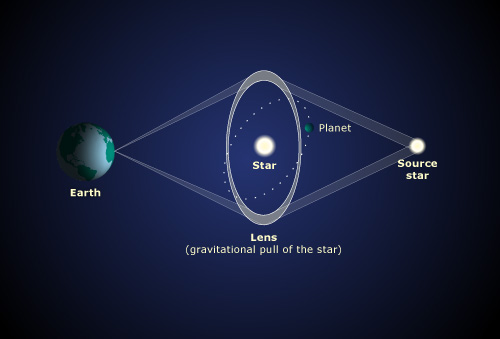
Planets can be detected indirectly by their gravitational interaction with light. In this diagram an undetected planet is shown orbiting a star. Directly behind this star is a more distant one, which is the source of light being studied from earth. The image of the background star becomes distorted by the gravitational field of the foreground star, which acts like a lens focusing light towards the observer on earth. If a planet is near the focused light it contributes to the lensing effect, and this can be detected on earth as a disturbance to the light being received from the distant star. New Zealand astronomers have used this technique to detect planets orbiting distant stars.
Using this item
Te Ara - The Encyclopedia of New Zealand
This item has been provided for private study purposes (such as school projects, family and local history research) and any published reproduction (print or electronic) may infringe copyright law. It is the responsibility of the user of any material to obtain clearance from the copyright holder.
Source: adapted from S. Liebes, Physical Review B, 133 (1964): 835






Add new comment